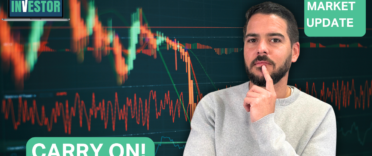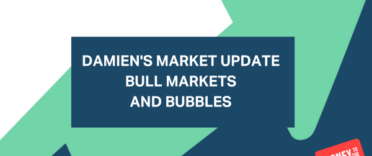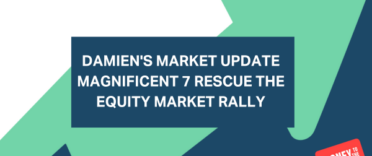Welcome to the latest episode of my monthly YouTube show where I discuss what is happening in investment markets and what to look out for. Today I explain
Each show lasts between 5-10 minutes and is aimed at DIY investors (including novices) seeking contemporary analysis to help them understand how investment markets work.
Subscribe to my YouTube channel to receive my weekly analysis of investment markets or alternatively, you can listen via my weekly Midweek Markets podcast below.
Damien's Market Updates monthly podcast
Other ways to watch, listen and subscribe
You can listen to other episodes and subscribe to the show by searching 'Money to the Masses' on Spotify or by using the following links:
Abridged transcript - Damien's Market Update - August 2022
I ended last month’s show by highlighting how commodity prices could help answer the question of whether central banks will carry on tightening monetary policy to combat inflation and cause a global recession, or whether inflation had already peaked?
If we look at how commodity prices fared during July then on the whole they continued to tumble. By way of example, the price of crude oil fell 10% with most other commodities also struggling. Of course there are always exceptions, such as natural gas which rallied more than 50% as a result of Russia’s rationing of supplies to Europe.
Copper, which is a good economic indicator as mentioned last time, plunged 16% during July. The continued plunge in commodities can be interpreted as being a result of increasing recession fears, especially in the face of central banks (in particular the US Federal Reserve) that are hell-bent on increasing interest rates to combat inflation.
Interestingly the Bank of England (BOE) became its most aggressive in 27 years, when it hiked its base rate by 0.5% to 1.75% at its August meeting. Not only that but the BOE even predicted that the UK economy would enter a recession later in 2022 and remain in one until 2024.
The BOE has caught up with what commodities have been telling us for a while, yet in the US officials seem to still be ignoring recession risks. Somewhat bizarrely the US has just experienced two consecutive quarters of economic contraction, which has always been the widely accepted definition of a technical recession. But this has now been largely dismissed by officials and the goal posts moved.
The increased likelihood of a recession in the US and globally has seen the market narrative shift significantly in July. Previously the belief was that the Fed (and other central banks) would hike interest rates and ultimately crash the economy, with the sole focus on bringing down inflation. With the market desperate for signs of a Fed pivot (from hawkish to dovish) investors jumped upon comments from the Fed Chair, Jerome Powell, just after he’d hiked US interest rates once again in July, that any future rate rises would be led by economic data.
With the removal of any kind of guidance on the path of interest rates, by just saying it will be led by future economic data alone, markets interpreted this as a dovish pivot from the Fed. To use an analogy, the market had previously believed the Fed intended to keep the accelerator pressed firmly down until it caused a crash, but the market now believes the Fed has decided to change tact, take its foot off the pedal and become more reactive - so avoiding crashing the US economy.
It means that market interest rate predictions have tumbled and the market is no longer assuming that interest rates will head higher regardless of the damage to the economy. This was positive for US tech stocks and bonds in particular. But of course such is the power of the Fed that similar positive moves were seen globally in stocks and bonds.
If we look at the returns of different equity markets globally during July, we saw some of the best monthly performances since late 2020. The FTSE 100 rallied 2.34%, the DAX 5.29%, the Nikkei 5.51% and the S&P 500 rallied 6.95%. But it was US tech stocks where investor FOMO really took hold. The tech-heavy Nasdaq 100 rallied 11.36%.
Lower interest expectations are good for bonds and also certain equity sectors such as technology stocks. On top of the supposed Fed pivot, signs that US tech earnings were weathering the economic slowdown better than expected also lit a rocket under technology stocks. In particular, Apple’s sales and profits beat analysts’ expectations and it was also positive about the prospect for future revenue growth, which sent its share price higher. As goes Apple, so goes the market according to the adage - which often proves valid given the outsized influence the stock has on the S&P 500. Apple has a weighting of 7.1% in the S&P 500 index, which is a huge amount. It is also the largest component of the MSCI World Index with a weighting of 4.54%.
It means that the S&P 500 has rallied an impressive 13.23% since its bear market low on 16th June 2022 and broken out of its downtrend dating back to the spring as investors think the central bank rate hiking cycle will be less severe than previously thought. So is this stock market rally finally sustainable or is it just another bear market rally? After all, we’ve seen a number of false breakouts this year already. Not only that but there is still a strong argument that we are in a downtrend dating back to the November 2021 highs.
If we look at the bear markets that started in 2000 (the dotcom crash) and 2008 (the financial crisis) the largest bear market rally was 23%. That happened between November 2008 and May 2009. So certainly the current rally could have much further to go. But after that 23% rally in 2008/9 the S&P 500 fell more than 27% before hitting the ultimate bottom achieved during the financial crisis bear market. The message is that the size of the current rally doesn't really tell us anything.
Ultimately recession is still likely to remain the market obsession in August, unless geopolitical tensions relating Ukraine/Russia and China/Taiwan ratchet up. Of course equity markets always tend to front-run the economy and rebound far sooner but the bond market is definitely not convinced that the economic outlook warrants such enthusiasm as we’ve seen in equity markets over the last month. The US yield curve is the most inverted since the year 2000 and equity markets tumbled back then and the 10 year yield has fallen to its lowest level since April (near 2.5%). In August we will likely find out whether equity markets are being too optimistic or whether bond investors have just become too bearish.



